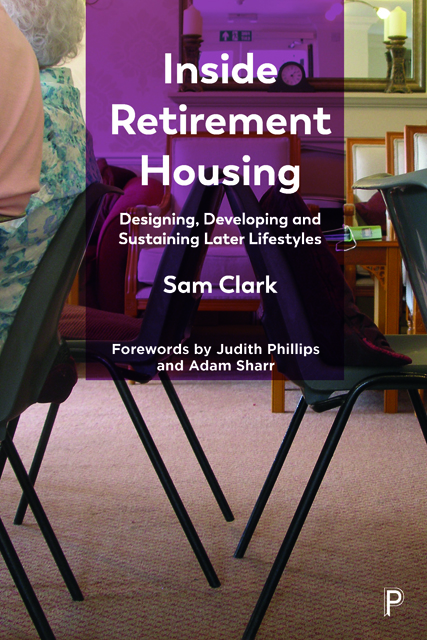13 - Design tweaks
Published online by Cambridge University Press: 20 June 2023
Summary
Synopsis
This chapter contains a reflective account that acknowledges the author’s agency as researcher and creative practitioner. In some respects it is the meta narrative that relates to and connects the other research stories within this book. It also offers a less tempered designer perspective and therefore speaks more directly to the experience of architectural practitioners and those engaged in practice-led research. In particular this chapter reflects on the theme of design research for change, and seeks to answer three questions: (i) who decided what to change, (ii) who activated the change and (iii) who has been affected by the change? Here ‘change’ is defined as revised or ‘tweaked’ design patterns/templates for an established product: Pink & Knight’s retirement villa. A case study is used to demonstrate how change can positively affect the experiences of residents and their visitors while occupying communal spaces within age-restricted residential developments.
Methods
In part this chapter is an autoethnographic account of the author as an actor in the research field; an acknowledgement that I have played a part in the research, having developed and performed multiple personas – academic, advocate, architect and so on – and sustained relations with various stakeholders. It also represents a sense-making process for an ethnographic inquiry framed as ‘creative practice’ and involving elements of design research. Autoethnographic writing is by nature self-reflective (Holt, 2003; Méndez, 2013), and so by placing emphasis on the ways in which I have interacted with the culture being researched, this story has something of a ‘confessional’ quality. It refers to regrets, paths not followed and mistakes made, as well as some positive experiences and surprises, and connects these to wider cultural meanings and understandings. The account begins with a retrospective analysis of prior understanding of retirement housing and wider gerontological issues.
Points of reference
Prior to undertaking this ethnography I had specific professional experience designing sheltered accommodation for residents with severe and complex needs, alongside more general experience working for an architectural practice specialising in social housing. However, I had not designed housing specifically for older people, nor had I been exposed to retirement housing.
- Type
- Chapter
- Information
- Inside Retirement HousingDesigning, Developing and Sustaining Later Lifestyles, pp. 231 - 246Publisher: Bristol University PressPrint publication year: 2022

